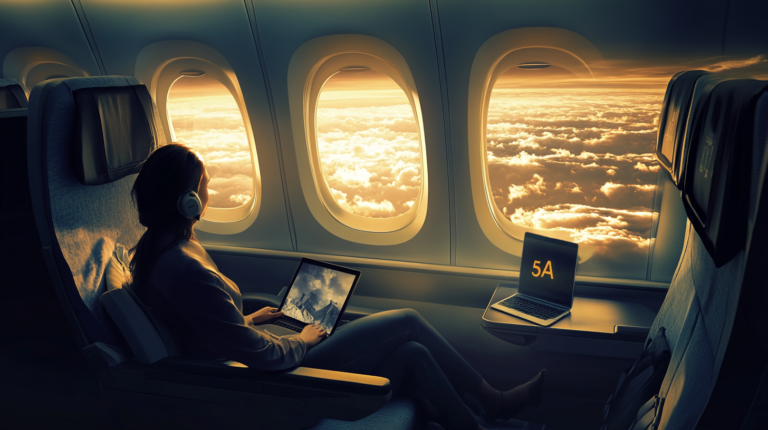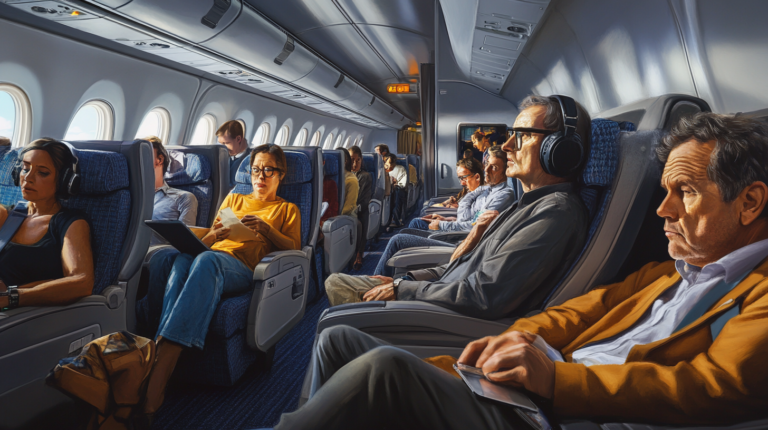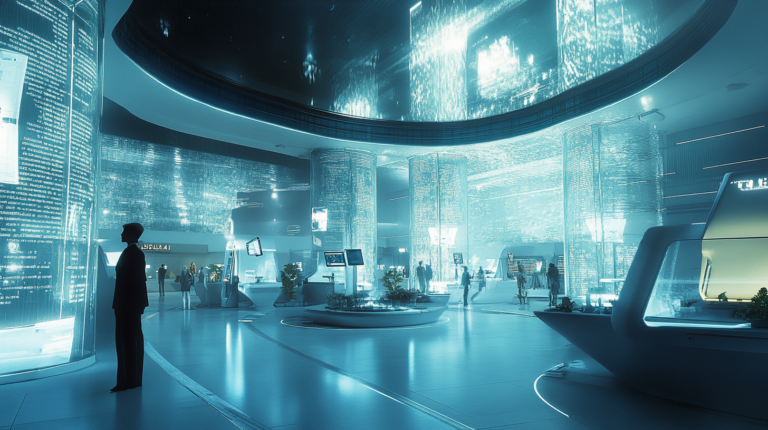A Nostalgic Journey Through the Golden Age of Airline Interiors: From Vibrant Luxury to Modern Minimalism
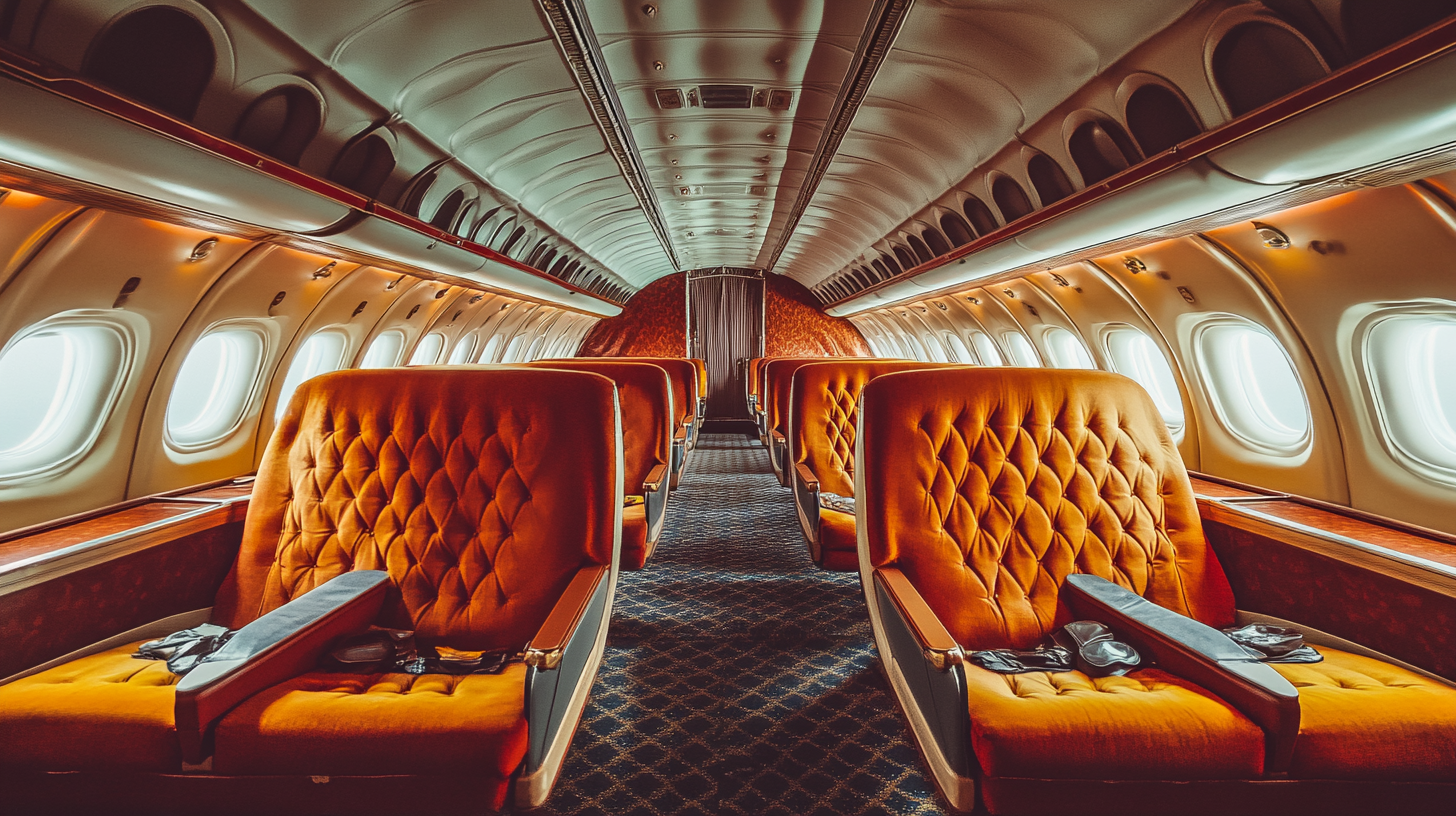
The allure of air travel has transformed dramatically over the decades, mirroring the ever-changing tapestry of society itself. In the mid-20th century, stepping onto an airplane was akin to entering a floating palace adorned with opulent décor and brimming with the promise of adventure. From lavish lounges to gourmet dining at 30,000 feet, cabin interiors were a testament to an era that celebrated extravagance and innovation. Fast forward to the present day, and cabins have been reinvented with a focus on sleek minimalism and cutting-edge technology, emphasizing efficiency and sustainability. This journey takes a nostalgic look at the golden age of airline interiors—when bold color schemes and unique seating arrangements were the norms—and compares them to the modern, efficiency-driven designs of today, exploring how airline cabin design has evolved over time .
The Golden Age of Air Travel: Luxury Takes Flight
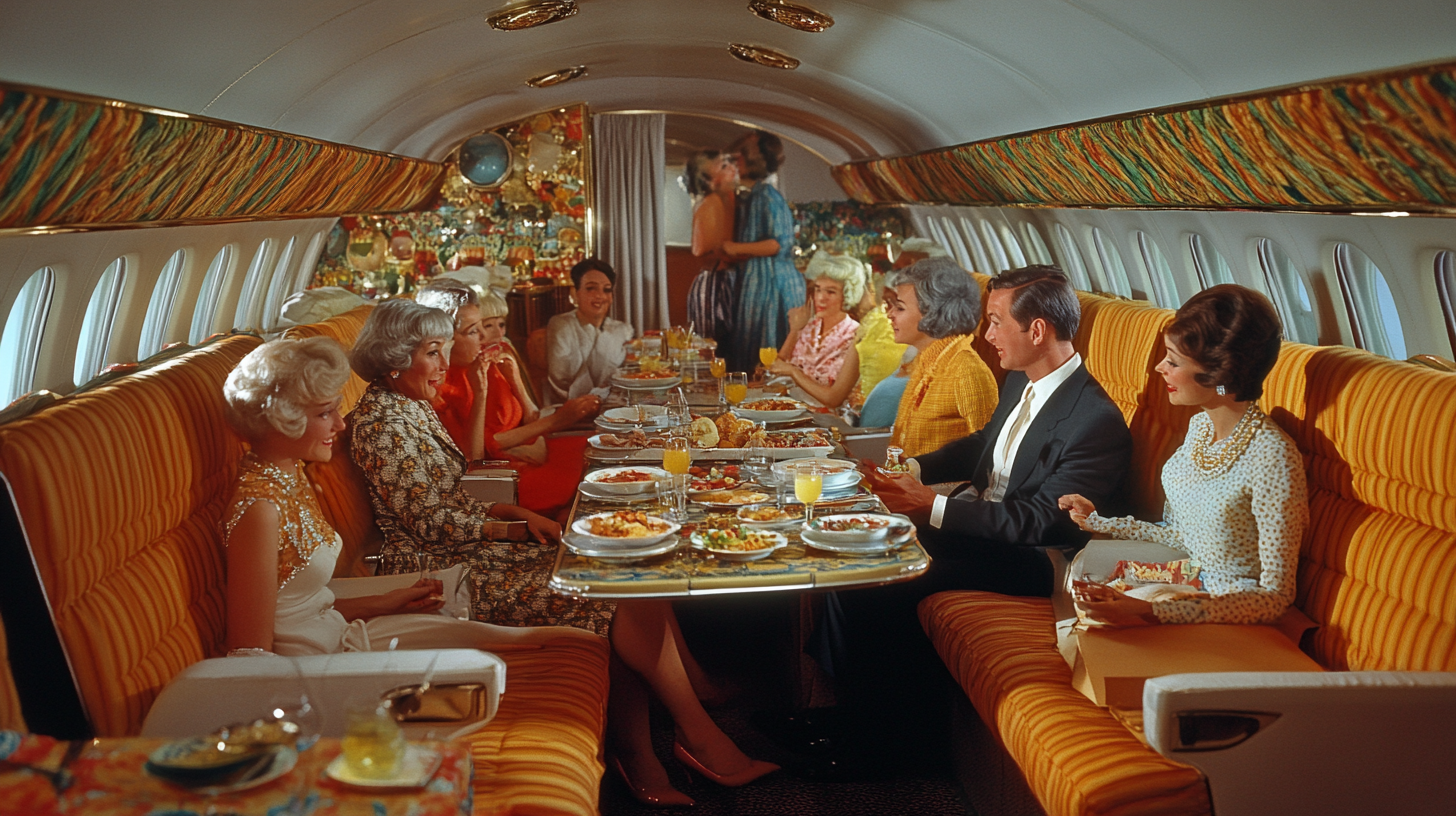
Following World War II, the 1950s ushered in what many term the “Golden Age of Air Travel,” a period when the skies were graced by gleaming aircraft that promised more than just a journey—they offered an exclusive experience. During this time, flying was not merely a means of transportation but a symbol of status and a gateway to the world. With regulated fares and routes, airlines competed vigorously on service quality rather than price, striving to outdo each other with opulence and hospitality. This competition resulted in an in-flight experience that today seems almost mythical in its luxury and attention to detail.
Passengers often dressed formally for flights, donning their finest attire as if attending a grand event. The aircraft interiors reflected and amplified this elegance, with cabins designed to impress and delight. Airlines like Pan American World Airways (Pan Am) and Trans World Airlines (TWA) became synonymous with sophistication and global exploration. The cabins were adorned with vibrant designs, plush carpeting, and spacious layouts, offering an ambiance akin to high-end lounges or even the deck of a luxury ocean liner. From the moment one stepped aboard, the atmosphere promised a journey unlike any other. The evolution of TWA’s cabin designs during the golden age showcases how airlines prioritized luxury and comfort to captivate travelers.
Bold Designs and Unique Seating Arrangements
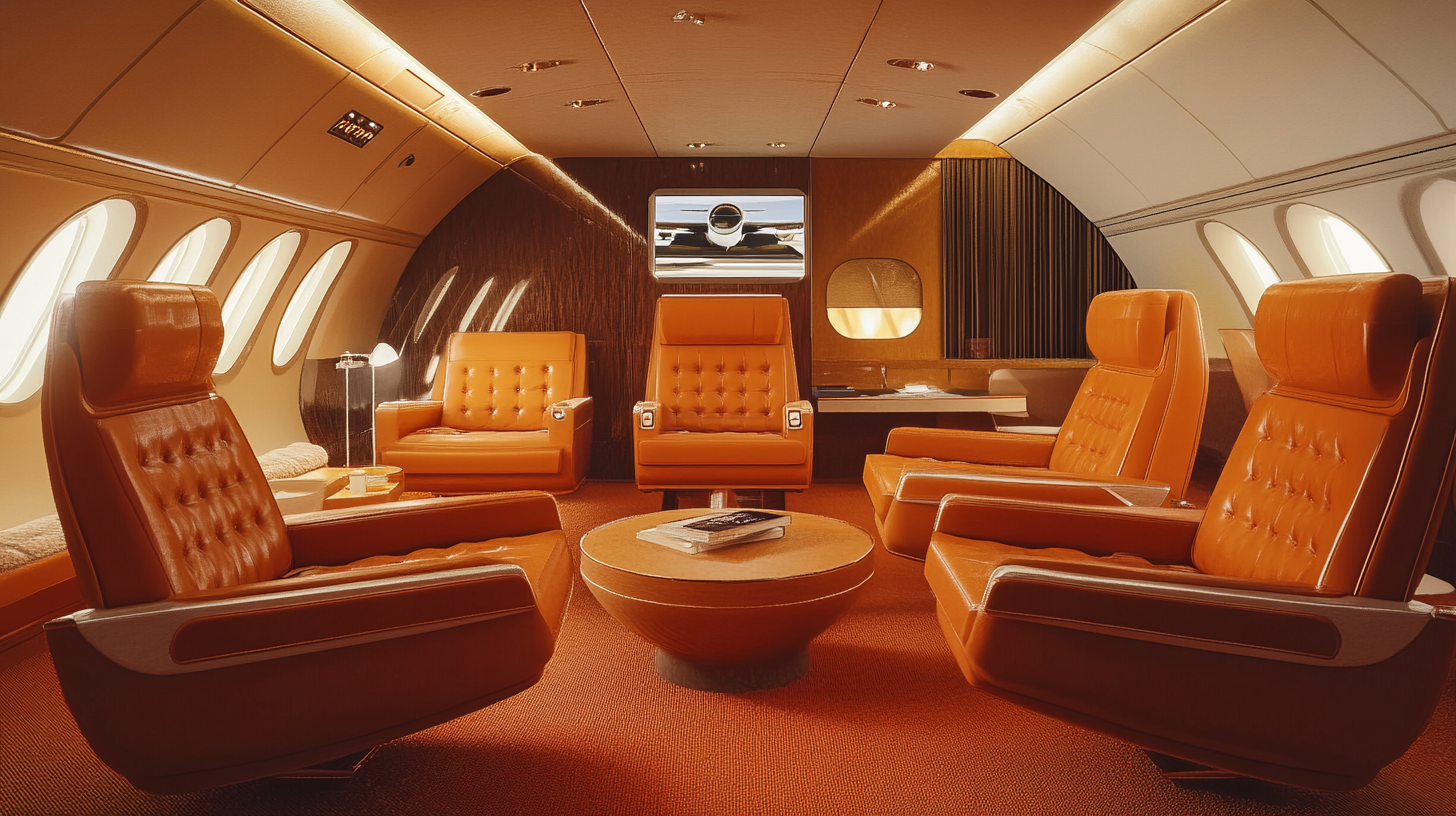
The interiors of aircraft during the 1950s to the 1970s were a celebration of bold aesthetics and a testament to the optimism of the era. Airlines embraced vibrant color schemes, with hues of rich blues, deep reds, and golden yellows adorning the cabins. Plush seating was not just a luxury—it was an expectation. Seats resembled luxurious armchairs, upholstered in fine fabrics or rich leather, allowing passengers to recline and relax in unparalleled comfort. The generous legroom was a stark contrast to today’s standards, and the spaciousness of the cabins contributed to a relaxed atmosphere. In-flight lounges were a hallmark of this period, providing elegant spaces for socialization complete with cocktail services, grand pianos, and even live entertainment on certain routes. Passengers could mingle freely, creating a convivial environment that extended beyond the confines of their seats.
The introduction of the Boeing 747 in 1969, affectionately known as the “Queen of the Skies,” revolutionized air travel with its expansive design and technological advancements. Its double-decker layout allowed for innovative cabin configurations that airlines eagerly exploited. Upper-deck lounges became symbols of exclusivity—a sanctuary above the clouds where passengers could escape the noise and bustle of the main cabin. Some airlines installed piano bars, creating an ambiance reminiscent of a sophisticated jazz club. A detailed exploration of the Boeing 747’s impact on airline interiors reveals how this aircraft redefined passenger expectations. Airlines prioritized the passenger experience, offering amenities like complimentary cocktails mixed by skilled bartenders, and gourmet meals served on real china with metal cutlery, elevating in-flight dining to an art form.
The Emergence of Cabin Classes and Differentiated Services
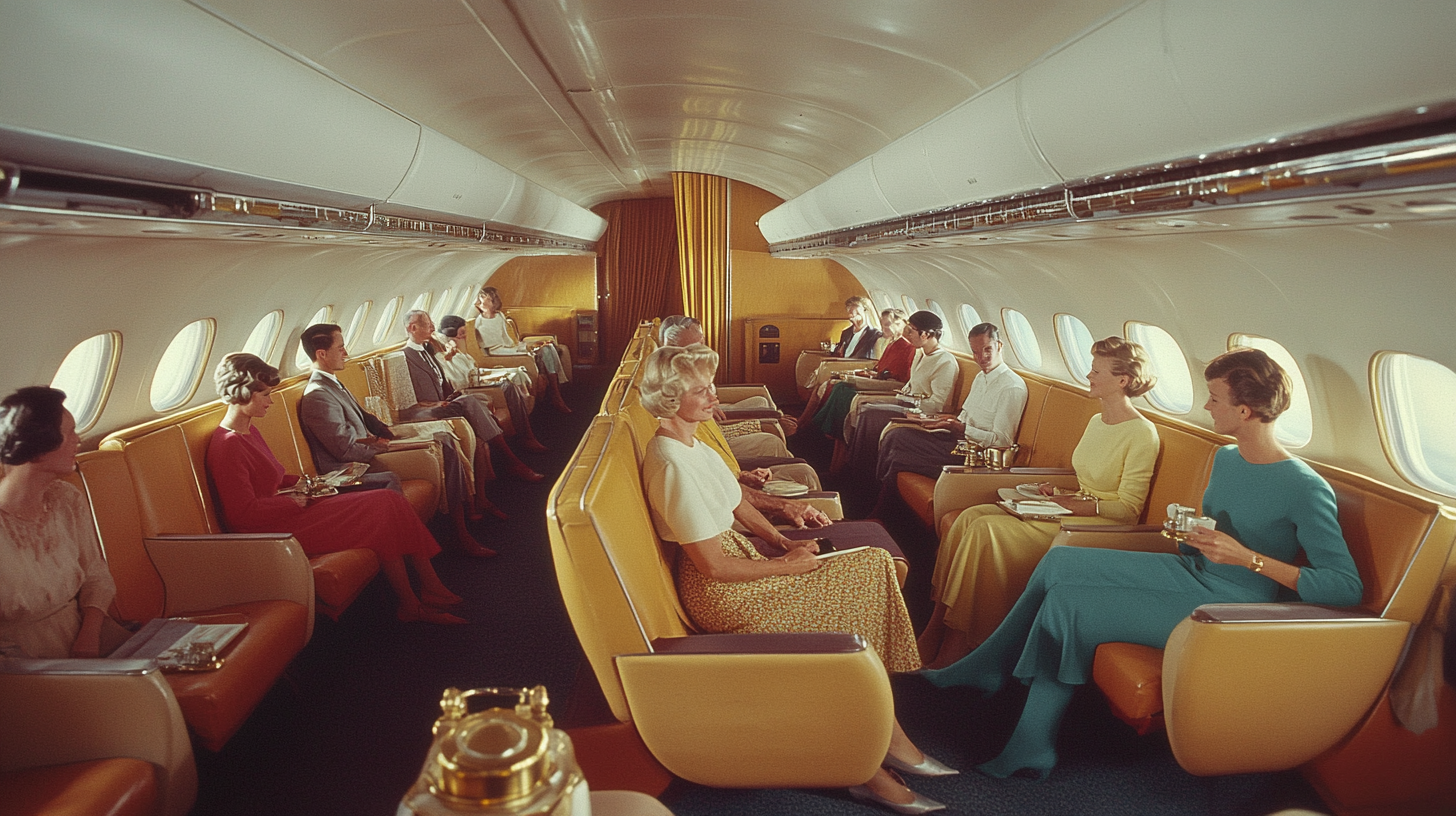
With advancements in aircraft technology during the 1970s, particularly the introduction of jumbo jets like the Boeing 747, airlines began to experiment with cabin class distinctions more prominently. This era saw the naissance of differentiated services designed to cater to the diverse needs and preferences of passengers. First-class cabins were crafted to offer unparalleled luxury, featuring private suites, personal service, and amenities that rivaled those of five-star hotels. Passengers could enjoy multi-course meals, fine wines, and even caviar, all while reclining in seats that could sometimes convert into beds.
Even in economy class, comfort levels were impressive by today’s standards. Seats were wider, legroom was ample, and the service included amenities now typically reserved for premium cabins. The distinction between classes was less about the basic comforts and more about the added luxuries and exclusivity offered.
Stewardesses, as flight attendants were known then, were the ambassadors of the airlines’ brand and epitomized the glamour of flying. Selected not only for their professionalism but also for their poise and elegance, they underwent rigorous training that emphasized service excellence. They became icons of the glamorous flying experience, often featured in haute couture uniforms designed by renowned fashion houses. These uniforms complemented the sophisticated cabin designs and contributed to the overall aesthetic. The role of fashion in stewardess uniforms during the golden age sheds light on how airlines used style to enhance their brand image.
The Shift Towards Efficiency: Deregulation and Economic Factors
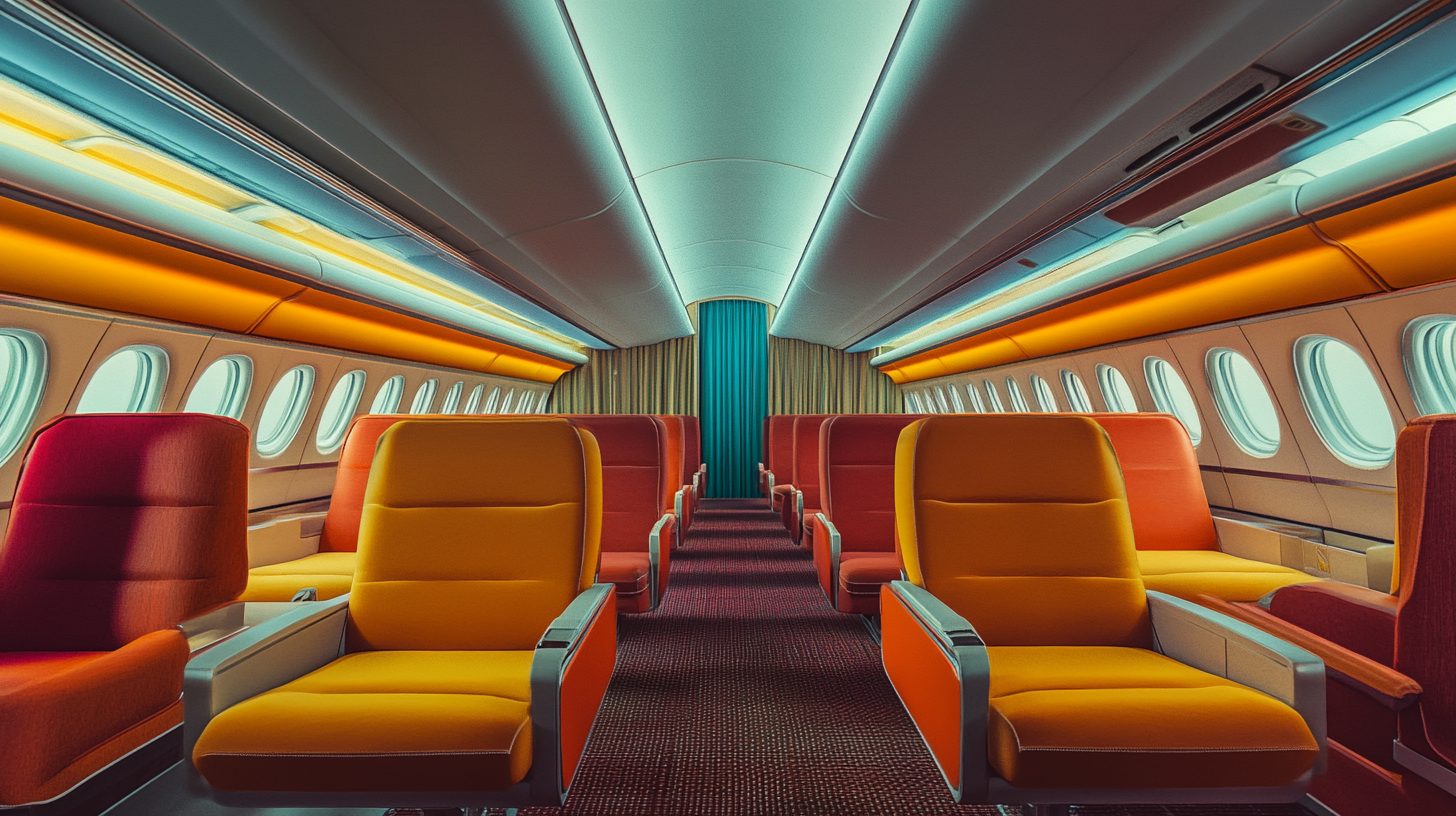
The opulence of air travel began to wane in the late 1970s, as the industry faced significant economic challenges. The oil crises of 1973 and 1979 led to soaring fuel prices, severely impacting airlines’ operational costs. These financial pressures compelled airlines to focus more on cost-effectiveness and operational efficiency rather than luxury and extravagance. The landscape of the industry was further transformed when, in 1978, President Jimmy Carter signed the Airline Deregulation Act. This landmark legislation fundamentally changed the industry by removing government control over fares, routes, and market entry of new airlines.
Deregulation led to increased competition as new carriers entered the market and existing ones expanded their services. Airlines began to compete aggressively on price rather than service quality, prompting a race to reduce fares to attract cost-conscious travelers. To maintain profitability, airlines had to cut costs, which meant rethinking their cabin designs and in-flight services. The lavish amenities and spacious cabins of the golden age were gradually replaced with more standardized and practical designs focused on maximizing seating capacity. The impact of airline deregulation on cabin design provides an in-depth analysis of this pivotal shift.
This shift resulted in more standardized and practical cabin designs. Seating capacity and affordability took precedence over luxury, and the spacious layouts of yesteryear gave way to more crowded configurations. While service quality declined, the number of routes and frequencies increased, making air travel accessible to a broader segment of the population. The democratization of air travel enabled more people to explore the world, albeit with fewer of the comforts previously associated with flying.
Modern Minimalism: Today’s Cabin Designs
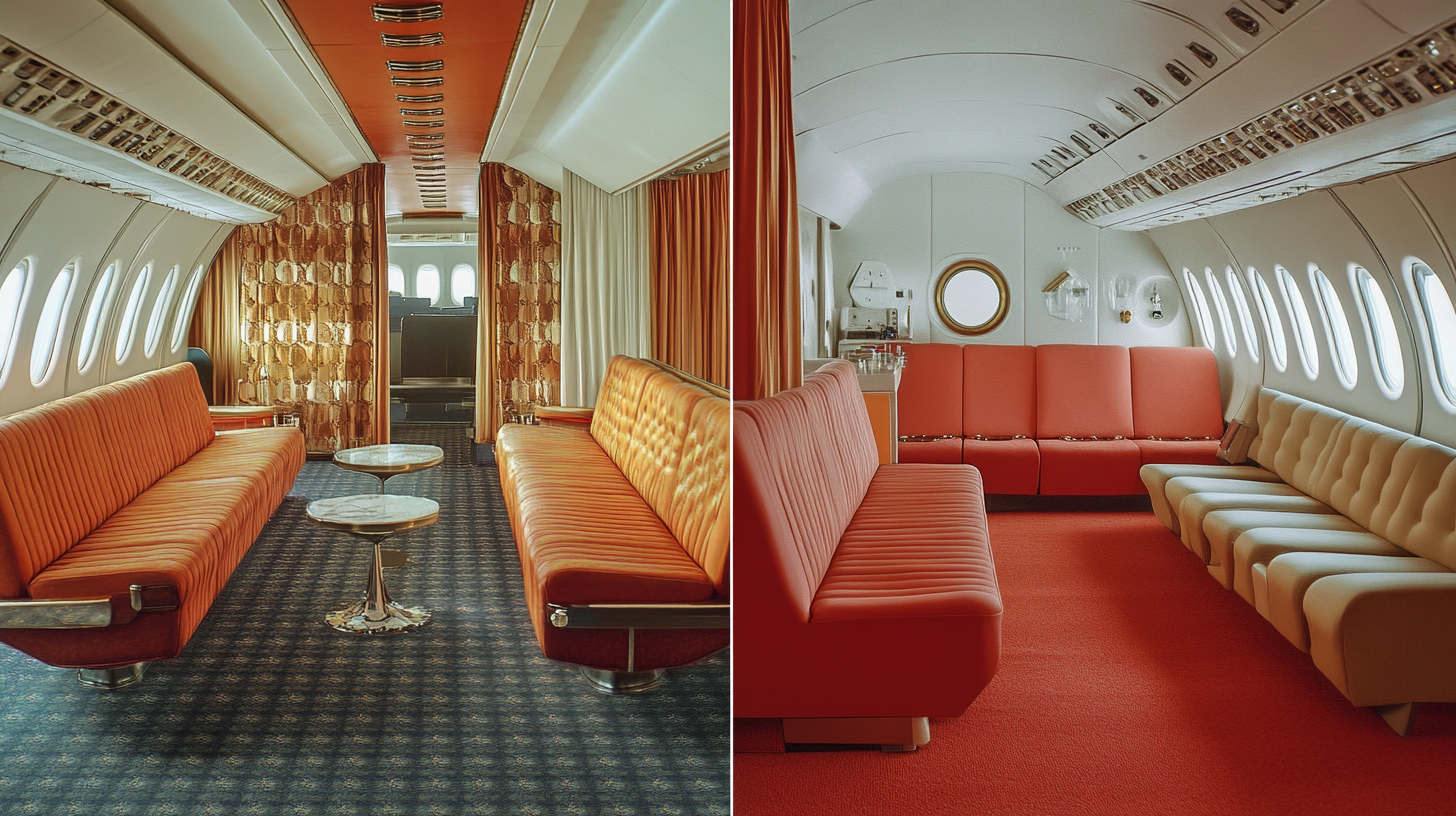
Contemporary aircraft interiors are characterized by sleek, minimalistic designs that reflect modern aesthetic trends and technological advancements. The focus has shifted towards maximizing space utilization and incorporating cutting-edge technology to enhance efficiency and the passenger experience. Seating has evolved into tech-driven designs that aim to balance passenger comfort with the airlines’ need for space optimization. Ergonomically designed seats feature adjustable headrests, lumbar support, and even massage functions in premium cabins. The use of lightweight composite materials contributes to fuel efficiency while allowing for innovative features. For instance, lie-flat seats in business class enable passengers to rest comfortably on long-haul flights, transforming their seats into beds at the touch of a button. Advanced in-flight entertainment systems offer high-definition screens, noise-canceling headphones, and a vast array of media options, keeping passengers engaged throughout their journey.
Moreover, connectivity has become an essential aspect of modern air travel. Passengers expect to stay connected via Wi-Fi, and airlines are investing in technologies to provide reliable internet service in the skies. The evolution of in-flight connectivity and its impact on passenger experience delves into how these advancements have redefined expectations.
Sustainability has also become a priority in modern cabin design, reflecting a growing global emphasis on environmental responsibility. Airlines are investing in materials and technologies that reduce environmental impact while maintaining or even enhancing passenger comfort. This includes using recyclable materials, reducing waste from in-flight services, and improving fuel efficiency through lighter cabin components. The differentiation of cabin classes continues to evolve, with premium cabins offering amenities like zero-gravity seating, mood lighting, and personalized service that utilizes data to cater to individual passenger preferences.
Comparing Past and Present: A Stark Contrast
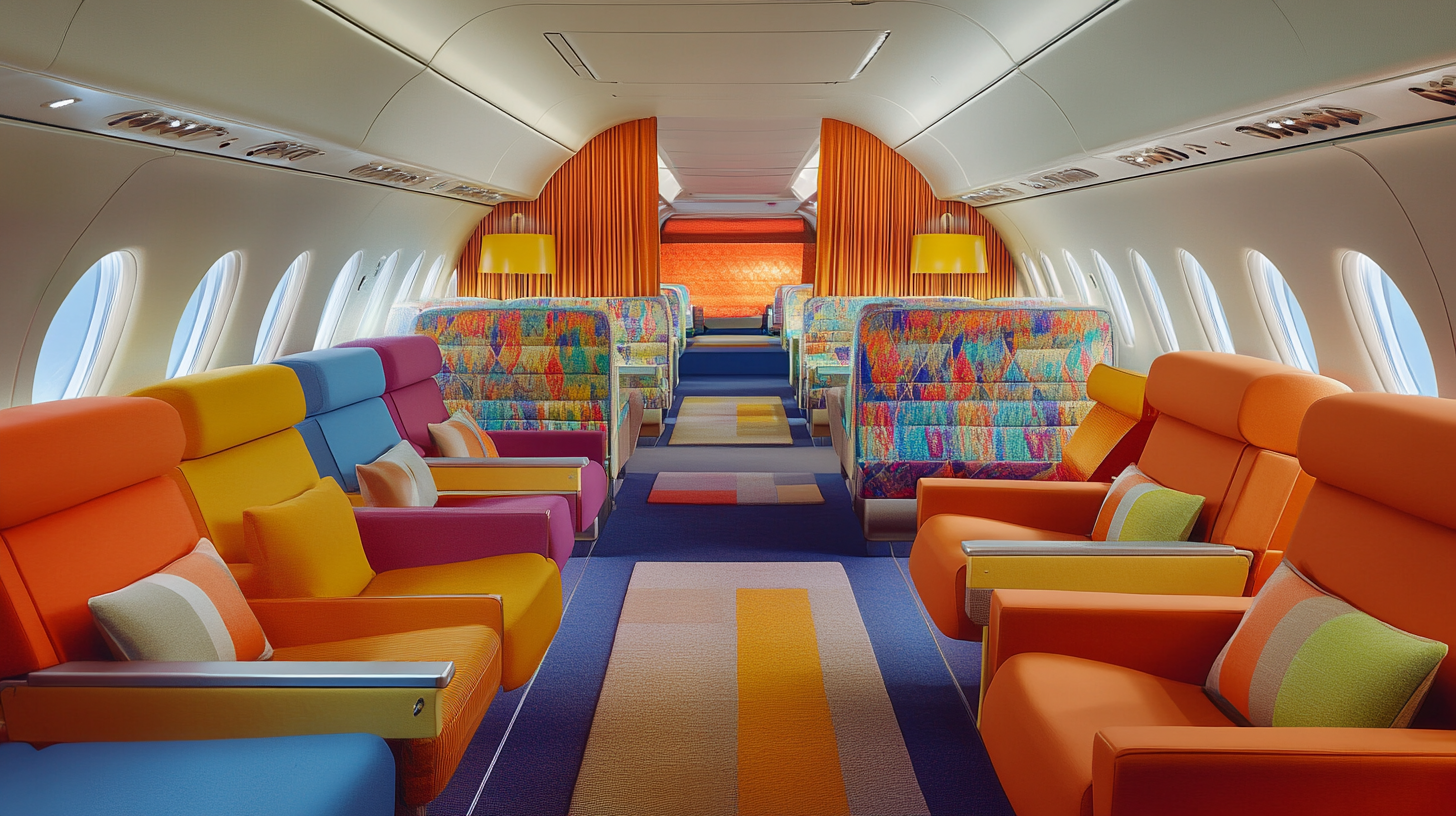
The contrast between the golden age of airline interiors and today’s cabins is indeed striking. In the past, passengers could expect to lounge in spacious seats with ample legroom, surrounded by opulent décor and attended to by elegantly dressed flight attendants. The journey itself was a significant part of the travel experience, with amenities like complimentary meals served on fine china, silver cutlery, and an assortment of wines and spirits—all standard regardless of class. Today, passengers often find themselves in more confined spaces, particularly in economy class, where airlines have reduced seat pitch and width to accommodate more travelers on each flight. Amenities that were once standard are now exclusive to higher fare classes or have been eliminated altogether in favor of cost savings.
However, the democratization of air travel has allowed more people to fly than ever before, transforming air travel from a luxury into an essential component of modern life. While the luxury has diminished for the average traveler, accessibility has increased significantly. Passengers today benefit from a wider range of flight options, destinations, and flight frequencies, making it possible to travel the globe with unprecedented ease. Low-cost carriers have further expanded the market, offering no-frills services that prioritize affordability. The rise of low-cost airlines and their impact on travel accessibility examines how this shift has changed the industry and traveler expectations.
The Evolution of Aircraft Seating
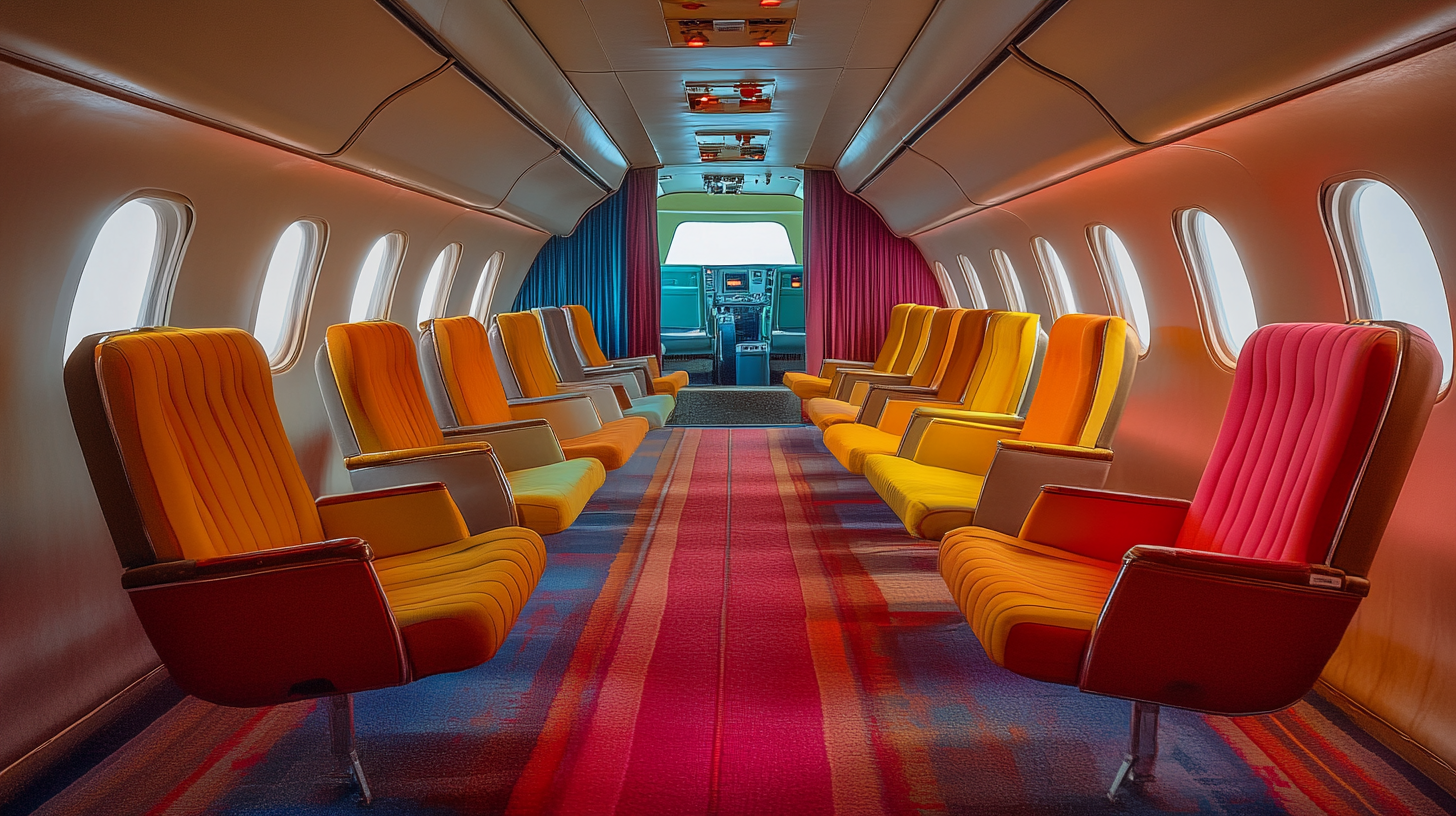
The transformation of aircraft seating over the past century encapsulates the broader changes in air travel and reflects societal shifts. Early aircraft seats were akin to armchairs, generously padded and spacious, often arranged in configurations that encouraged social interaction. As passenger volumes grew and airlines sought to maximize capacity, seating designs evolved to balance comfort with efficiency. Today’s ergonomic designs aim to make the most of limited space, incorporating features that enhance comfort despite reduced personal space. Designers are challenged to create seats that offer comfort without compromising space efficiency or adding excessive weight to the aircraft.
Advancements in materials science have played a significant role in this evolution. The use of lightweight composite materials reduces the overall weight of the aircraft, contributing to fuel efficiency and environmental sustainability. Technology has also been integrated into seating, offering personalized comfort settings such as adjustable lumbar support, seat temperature control, and even built-in massage functions in premium cabins. Business and first-class cabins now feature seats that recline into fully flat beds, catering to the needs of long-haul travelers seeking rest and privacy. Some airlines have introduced private suites with closing doors, ambient lighting, and even virtual windows. Innovations in aircraft seat design and passenger comfort explores how these developments aim to enhance the in-flight experience.
Reflecting on a Bygone Era
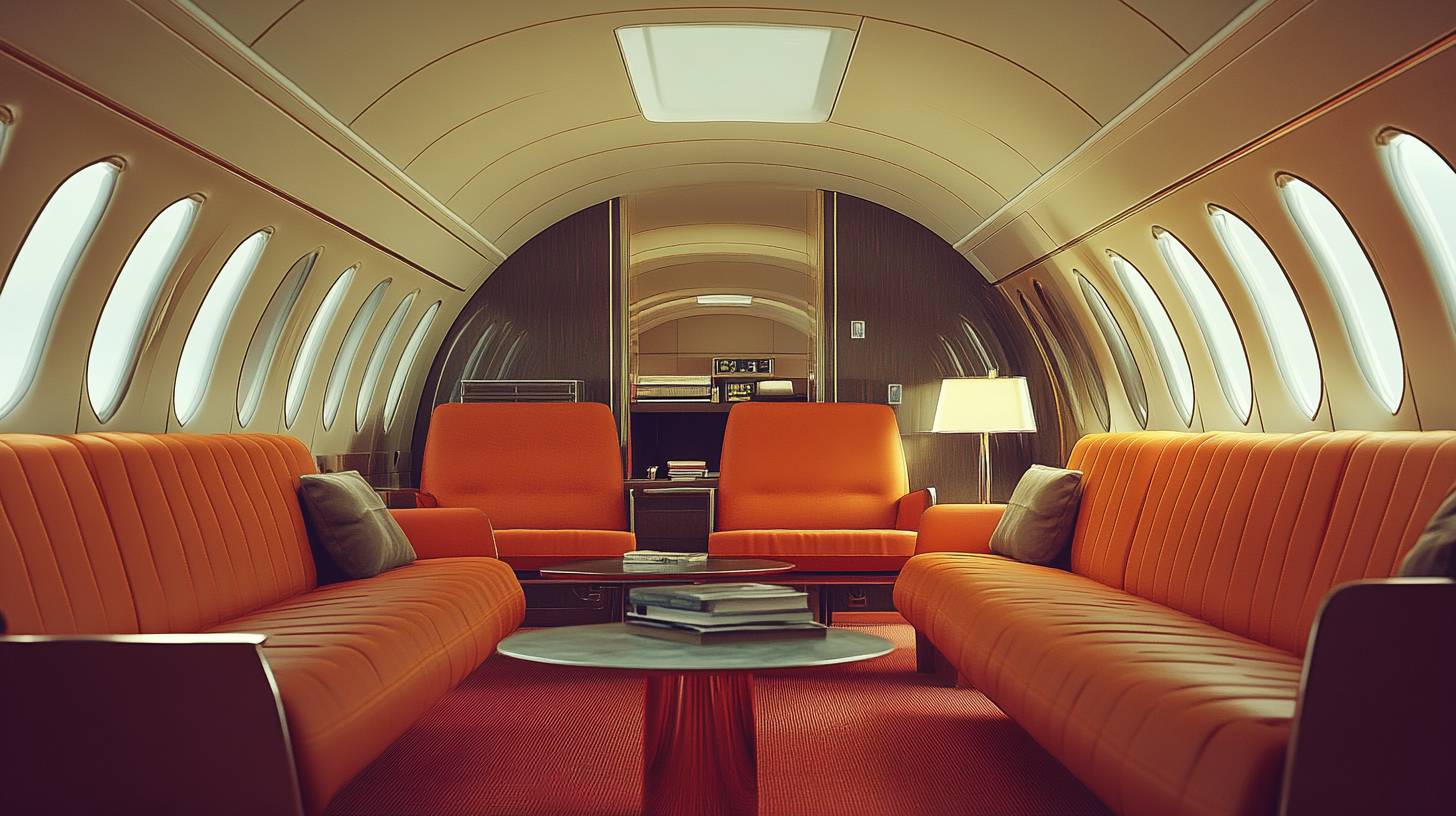
The golden age of airline interiors remains a nostalgic memory for those who experienced it and a fascinating subject for aviation enthusiasts and historians alike. It was an era defined by elegance and innovation—a time when the journey was as significant, if not more so, than the destination itself. Luxury was not just offered but was an inherent hallmark of the flying experience. From the moment one stepped into the terminal, with its stylish architecture and attentive service, to the final descent, passengers were immersed in an environment designed to delight and inspire.
While modern air travel prioritizes efficiency and accessibility, the legacy of that glamorous era continues to inspire elements of contemporary design and service. Airlines occasionally evoke the nostalgia of the golden age through retro-themed flights or special amenities in premium cabins. How airlines are rekindling the glamour of past eras in modern flights highlights examples of how the industry pays homage to its luxurious past.
Understanding this evolution provides context for today’s travelers, highlighting how economic, technological, and cultural shifts shape the way we fly. The balance between comfort, cost, and accessibility remains a central theme in the ongoing story of aviation. As the industry continues to evolve, future innovations may once again elevate the in-flight experience, blending the luxury of the past with the technology and sustainability of the present.
Final Thoughts
As we reflect on the evolution of airline interiors, it’s clear that the journey from opulence to efficiency mirrors broader societal changes. While the golden age of air travel offered unparalleled luxury, today’s designs prioritize accessibility and sustainability. Follow us back to Seat 5A for more insights into the fascinating world of aviation.



